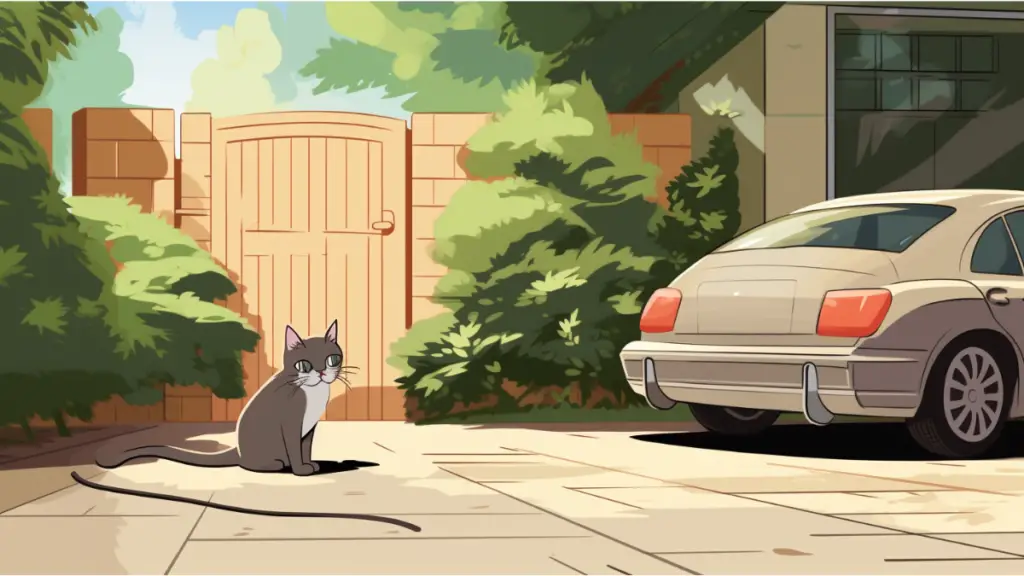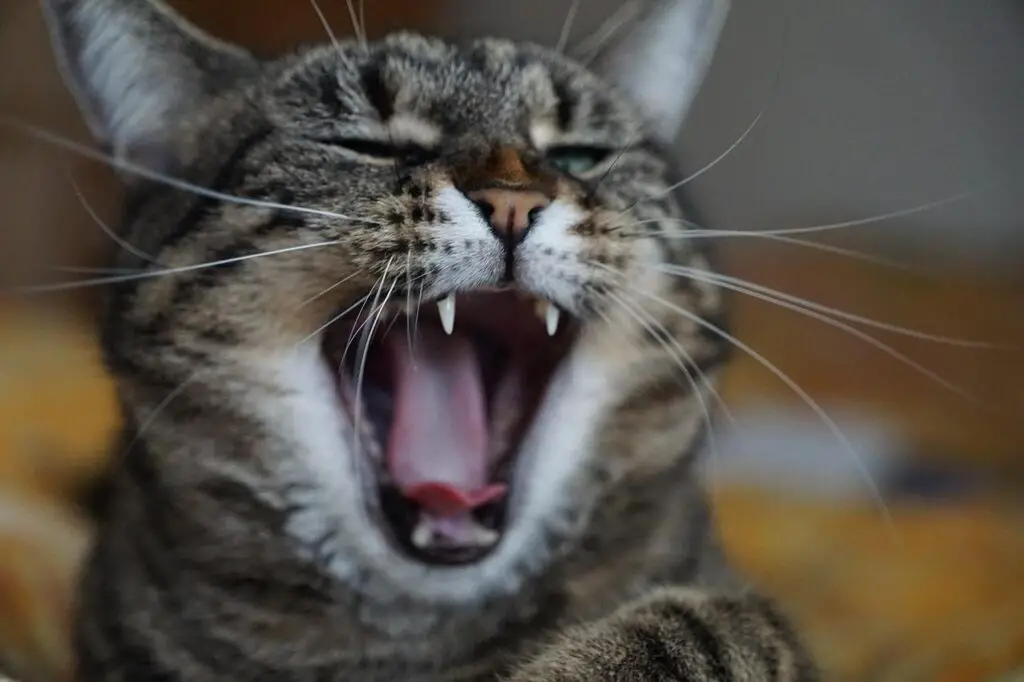Are you tired of waking up to find cat paw prints and scratches all over your car? You’re not alone. Many people face this issue, which can be quite a nuisance, not to mention the potential harm it can cause your vehicle.
But don’t worry, we’ve got you covered. In this article, we will explore why cats are attracted to cars and provide effective strategies to deter them.
Key Takeaways
- Cats are attracted to cars for various reasons, including warmth, marking territory, seeking elevated positions, curiosity about smells, and seeking attention or play.
- Cats on cars can cause damage such as scratches on the paint, paw prints and fur on the surface, urine or spray marking, damage to windshield wipers or antennas, and potential clogging of car engine vents.
- Natural deterrents, such as citrus peels or essential oils, coffee grounds, herbs like rosemary or lavender, motion-activated sprinklers, and ultrasonic devices, are available to keep cats away from cars.
- Physical barriers can be used to prevent cats from accessing cars, such as covering the car with a tarp or car cover, placing chicken wire or mesh over the car hood, using car alarms or motion sensors, creating physical barriers with fences or gates, and installing spikes or sticky tape on car surfaces.
Understanding Feline Behavior
To keep cats off your car, it’s crucial to understand their behavior. Cats are attracted to the warmth of the car hood and often mark territory, which can lead to damage like scratches and urine marking.
Feline instincts are rooted in survival and territory, often resulting in climbing on cars. Modifying cat behavior can be a productive way to prevent them from causing harm to your vehicle.
One approach is to provide alternative spaces and stimulation to divert their attention. By creating designated areas for them to explore and play, you can help keep them away from your car.
Remember, you’re protecting your car and serving these curious creatures by creating a safer environment for them. When we understand and respect their instincts, we can find solutions for us and our feline friends.

Natural and Commercial Repellents
Natural and commercial repellents might be useful in keeping felines off your vehicle. Here’s why:
- Pros and cons of using cat repellent sprays: These sprays, often made with natural ingredients, deter cats with their strong scents. However, they need frequent reapplication, especially after rain, and some cats may get used to the smell over time.
- Effectiveness of ultrasonic cat repellent devices: These devices emit a high-frequency sound that cats find uncomfortable. They’re quite effective and weather-resistant, but some cats may not be sensitive to the frequency emitted.
Both these methods can serve your needs well. However, remember, they are deterrents, not definitive solutions. Addressing the root cause is crucial, such as providing sufficient play areas or shelters for these curious creatures.

Physical Obstructions and Alarms
Let’s now focus on physical obstructions and alarms, which can provide extra protection for your vehicle against feline intruders.
Consider car covers as a simple yet effective way to deter cats. They shield your car from paw prints and scratches and make it less attractive to cats seeking a warm hood to lounge on.
In addition, think about installing motion sensors. These devices can detect movement and deter cats by triggering lights or sounds. It’s a humane way to protect your car while also serving the well-being of the cats.
Remember, every action we take impacts our community, including our curious feline friends. So, let’s choose solutions that respect our property and instincts.
Creating Cat-Friendly Spaces
Creating a space just for your feline friends can work wonders in keeping them off your vehicle. When designing outdoor cat play areas, your imagination is the limit. Think jungle gyms, scratching posts, and maybe even a mini obstacle course.
Cats are curious creatures so stimulating environments can divert their attention from your car.
Encouraging cats to use designated scratching surfaces is also key. You can coat these surfaces with catnip or their favorite scents. This way, they’re more likely to pick up the habit of scratching where they should, instead of your car.
Remember, you’re helping yourself and serving your furry friends by providing them with a fun, safe environment.
Legal and Community Solutions
If issues persist despite trying various methods, consider exploring the legal options and community initiatives available in your area. Check your local laws and regulations about cat control. Some places may have specific policies in place about stray or nuisance cats. If necessary, report the issue to local animal control authorities.
Neighborhood collaborations can be an effective way to manage the situation. Establish a neighborhood watch or share effective deterrent methods. Organize community events to raise awareness about the issue. Remember, it’s important to approach this with a spirit of cooperation, not confrontation.
Here’s a simple table summarizing some actions you can take:
| Action | Potential Impact | Legal Implications |
|---|---|---|
| Checking local laws | Understand your rights and responsibilities | Avoid legal issues |
| Reporting to authorities | Get professional help | Possible cat trapping and relocation |
| Neighborhood collaborations | Shared solutions and resources | Depends on local regulations |
Remember, the goal is to coexist peacefully with these furry neighbors while protecting your property.
Frequently Asked Questions

Conclusion
You’ve got the tools now to keep cats off your car. From natural repellents to physical barriers, there’s a solution that’ll work for your situation.
Remember, part of the solution is being a responsible pet owner and creating cat-friendly spaces. Don’t forget to engage your community and check local laws.
If all else fails, seek professional advice. You’re not alone in this; with some effort, you can keep your car cat-free.
